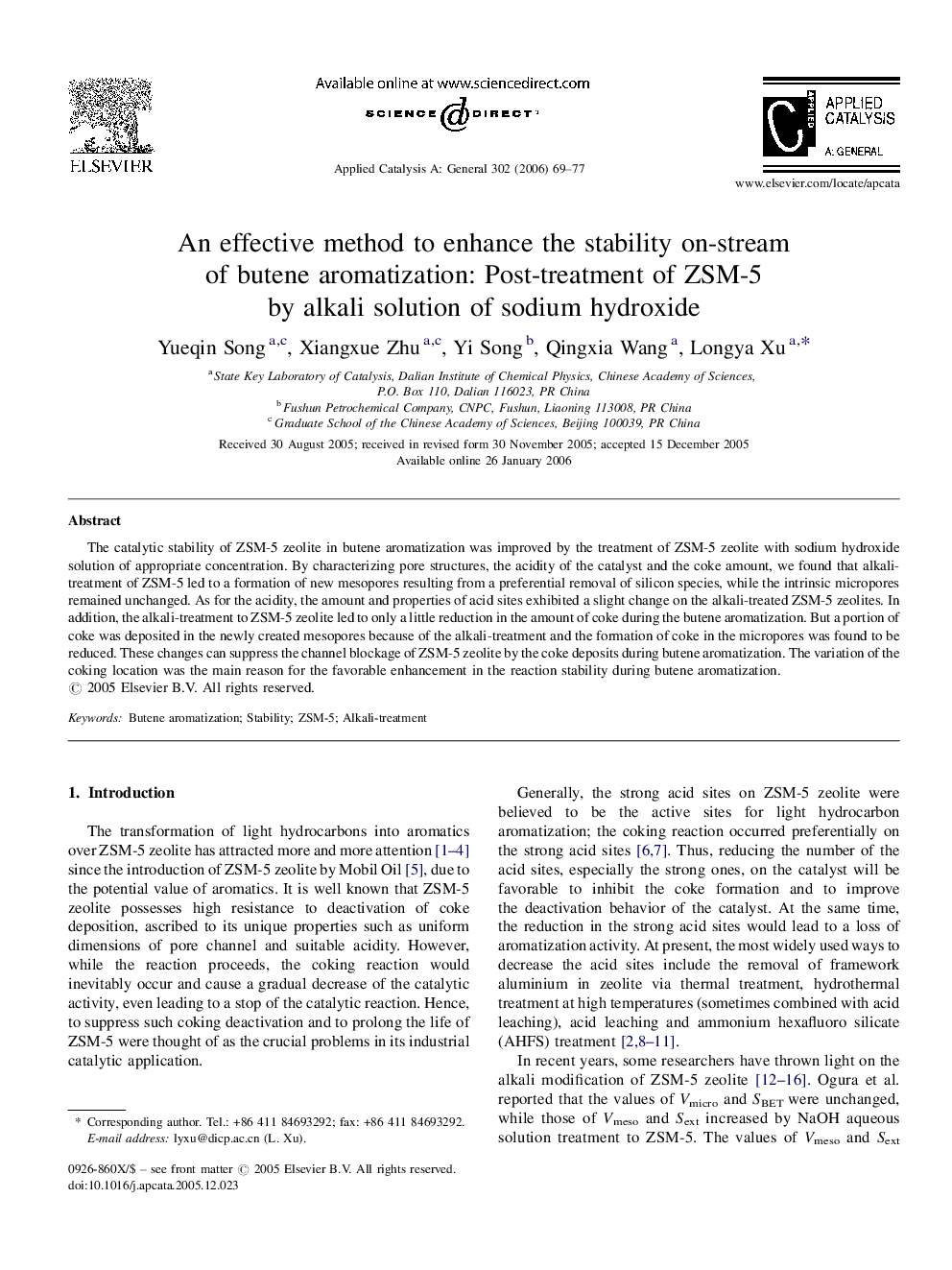| Article ID | Journal | Published Year | Pages | File Type |
|---|---|---|---|---|
| 43880 | Applied Catalysis A: General | 2006 | 9 Pages |
The catalytic stability of ZSM-5 zeolite in butene aromatization was improved by the treatment of ZSM-5 zeolite with sodium hydroxide solution of appropriate concentration. By characterizing pore structures, the acidity of the catalyst and the coke amount, we found that alkali-treatment of ZSM-5 led to a formation of new mesopores resulting from a preferential removal of silicon species, while the intrinsic micropores remained unchanged. As for the acidity, the amount and properties of acid sites exhibited a slight change on the alkali-treated ZSM-5 zeolites. In addition, the alkali-treatment to ZSM-5 zeolite led to only a little reduction in the amount of coke during the butene aromatization. But a portion of coke was deposited in the newly created mesopores because of the alkali-treatment and the formation of coke in the micropores was found to be reduced. These changes can suppress the channel blockage of ZSM-5 zeolite by the coke deposits during butene aromatization. The variation of the coking location was the main reason for the favorable enhancement in the reaction stability during butene aromatization.
